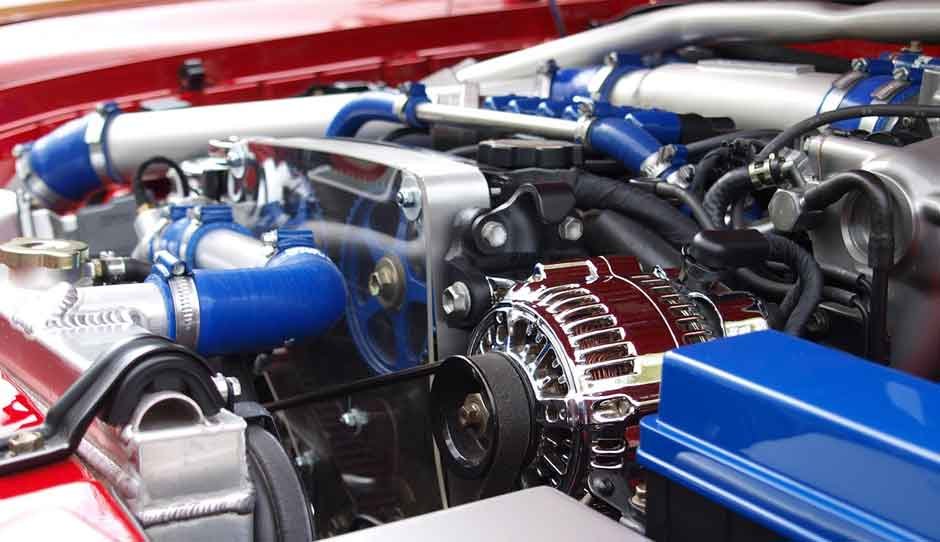Tuning your car’s engine can be a rewarding way to boost performance, improve fuel efficiency, and extend the life of your vehicle. While the process requires careful attention and a good understanding of your car’s mechanics, it is possible to tune your engine by yourself safely. This guide will walk you through the essential steps and tips to ensure a safe and effective tuning process. By following these guidelines, you can achieve optimal performance from your car’s engine without compromising safety. Each section provides detailed instructions to help you navigate the complexities of engine tuning.
Understanding Your Engine
Understanding your engine is crucial for safely tuning your car’s engine by yourself. Knowing the specific components and their functions helps in making informed adjustments that enhance performance without causing damage. For instance, if you have a VW 2.5 engine, being familiar with its design and characteristics allows you to modify its settings for optimal results effectively. This knowledge ensures that any tuning efforts, such as adjusting air-fuel ratios or ignition timing, are done with precision and care. By comprehensively understanding your engine, you can achieve significant performance improvements while maintaining reliability and safety.
Gathering the Right Tools and Equipment
Having the correct tools and equipment is essential for successful engine tuning. Invest in high-quality tools such as wrenches, screwdrivers, and a torque wrench, as these will ensure precise adjustments. You’ll also need specialized equipment like an OBD-II scanner to read and clear diagnostic trouble codes and a timing light to adjust ignition timing. A comprehensive set of tools will not only make the tuning process more efficient but also help prevent damage to engine components. Ensure that you have a clean, well-lit workspace to carry out the tuning safely.
Ensuring Safety Precautions
Safety should be your top priority when tuning your car’s engine. Begin by disconnecting the battery to prevent any electrical shocks or accidental starts. Use jack stands to securely elevate the vehicle if you need to access the underside of the engine. Wear protective gear such as gloves and safety glasses to protect yourself from debris and chemicals. Always work in a well-ventilated area to avoid inhaling harmful fumes from engine fluids and exhaust. Following these safety precautions minimizes the risk of injury and ensures a smooth tuning process.
Performing a Basic Tune-Up
A basic tune-up is the foundation of engine tuning and involves several key steps. Start by replacing the spark plugs, as worn-out plugs can significantly affect engine performance. Check and replace the air filter to ensure the engine receives clean air for combustion. Inspect the ignition system and replace any faulty components, such as the ignition coil or distributor cap. Finally, adjust the idle speed and mixture to achieve optimal engine performance. Performing these basic tasks sets the stage for more advanced tuning and ensures your engine is running efficiently.
Adjusting Ignition Timing
Proper ignition timing is crucial for engine performance and fuel efficiency. Use a timing light to check the current ignition timing and compare it to the manufacturer’s specifications. If adjustments are needed, loosen the distributor hold-down bolt and rotate the distributor slightly until the timing is correct. Tighten the bolt and recheck the timing to ensure it’s accurate. Incorrect ignition timing can lead to engine knocking and poor performance, so take your time to get it right.
Fine-Tuning the Fuel System
Fine-tuning the fuel system involves adjusting the fuel-to-air ratio to ensure optimal combustion. Start by checking the fuel pressure using a fuel pressure gauge and compare it to the manufacturer’s recommendations. Adjust the fuel pressure regulator if necessary to achieve the correct pressure. Next, use an OBD-II scanner to monitor the air-fuel ratio and adjust the fuel injectors or carburetor as needed. Proper fuel system tuning enhances engine performance and can improve fuel economy.
Calibrating the Throttle Position Sensor (TPS)
By tracking the throttle’s location, the Throttle Position Sensor (TPS) is an integral part of engine control. To begin, find the throttle position sensor (TPS) on the throttle body and remove its electrical connection. Take readings from the sensor’s voltage using a millimeter, and then set the value to the values recommended by the manufacturer. After reattaching the electrical connection, make sure the throttle responds smoothly by testing it. Accurately adjusting the TPS allows for more precise throttle control and better engine performance.
Testing and Fine-Tuning
After completing the initial tuning steps, it’s essential to test and fine-tune the engine to ensure optimal performance. Take your car for a test drive and pay attention to how it responds to acceleration, deceleration, and idling. Use an OBD-II scanner to monitor real-time data and make any necessary adjustments to the ignition timing, fuel system, or TPS settings. Please keep track of your adjustments and their effects to achieve the best possible engine performance. Testing and fine-tuning are iterative processes that help you refine the tuning for maximum efficiency.
Documenting Your Work
Documenting your tuning process is important for future reference and troubleshooting. Keep detailed notes of all adjustments made, including the settings and measurements taken at each step. Take photos or videos, if possible, to visually record the tuning process and any significant changes. This documentation will be invaluable if you need to revisit the tuning or if you encounter any issues in the future. Having a well-documented record ensures you can replicate successful tuning and address any problems effectively.
Conclusion
Tuning your car’s engine by yourself can be a rewarding and cost-effective way to enhance performance and longevity. By understanding your engine, using the right tools, and following safety precautions, you can perform a successful engine tune-up. From basic maintenance to advanced adjustments, each step contributes to optimizing your car’s performance. Regular testing and fine-tuning ensure that your engine remains in top condition. With careful attention and a systematic approach, you can safely tune your car’s engine and enjoy the benefits of improved performance and efficiency.


